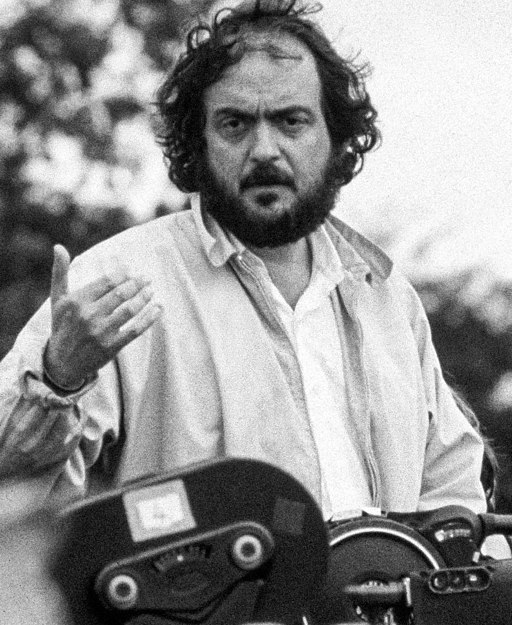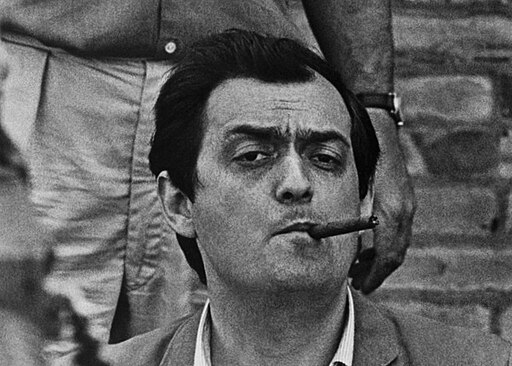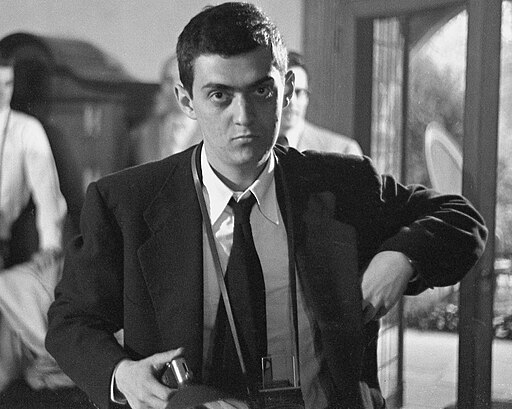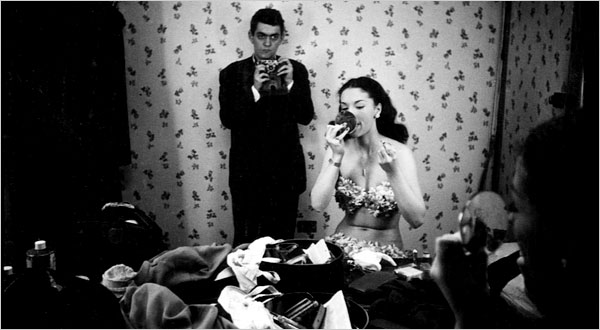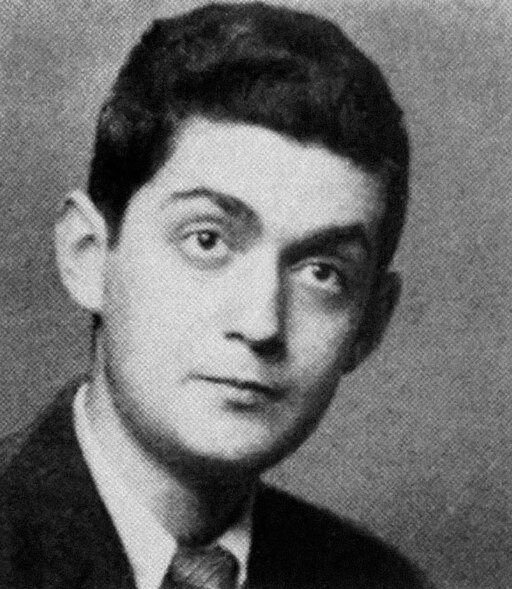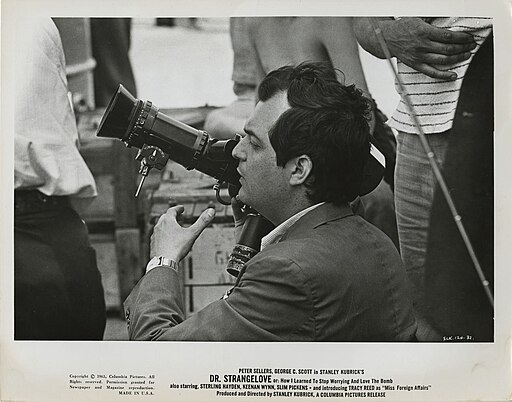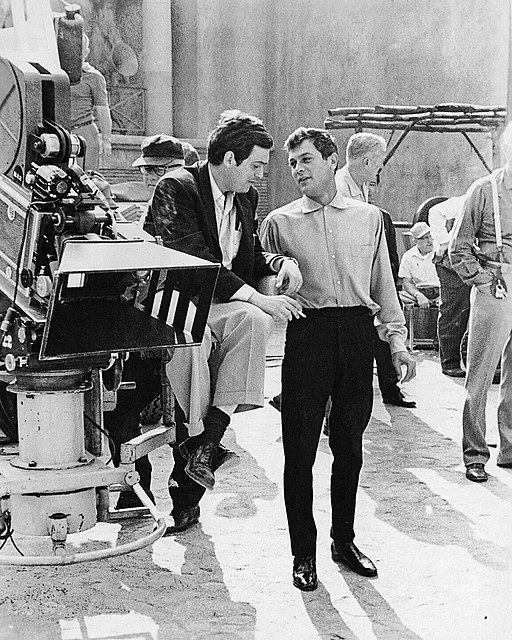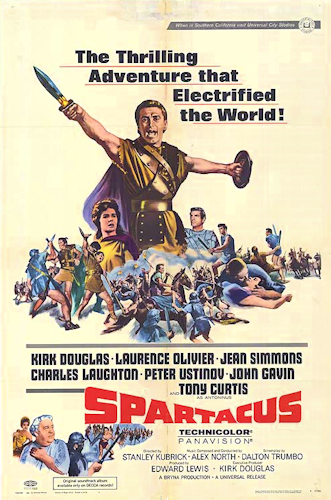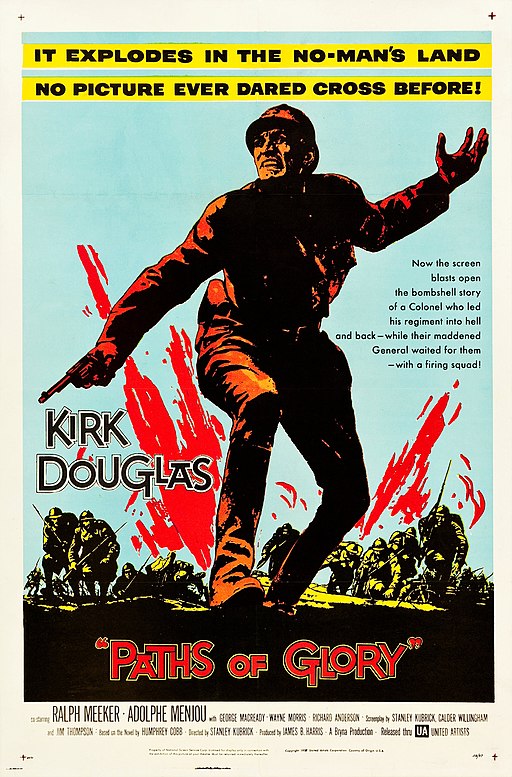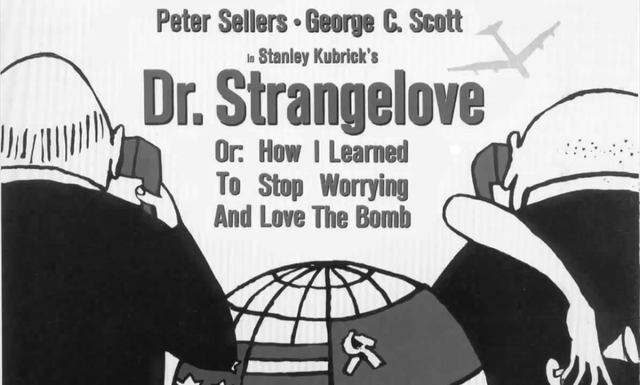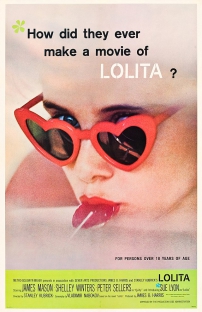Stanley Kubrick
back| Full Name | Stanley Kubrick |
| Born | July 26, 1928 |
| Birthplace | Manhattan, New York City, U.S. |
| Died | March 7, 1999 |
| Buried | Childwickbury Manor, Hertfordshire, England |
| Married to | Toba Metz (m. 1948; div. 1951) - Ruth Sobotka (m. 1955; div. 1957) - Christiane Harlan (m. 1958 until his death in 1999) |
| Children | Katharina - Anya - Vivian (all with Christiane Harlan) |
| Notable films | Paths of Glory (1957) - Spartacus (1960) - Lolita (1962) - Dr. Stangelove (1964) - 2001: A Space Odyssey (1968) - A Clockwork Orange (1971) - Barry Lyndon (1975) - The Shining (1980) - Full Metal Jacket (1987) - Eyes Wide Shut (1999) |
Stanley Kubrick
The Perfectionist of Thematic Cinema
Stanley Kubrick, born on July 26, 1928, in New York City, was a visionary filmmaker known for his meticulous craftsmanship and innovative storytelling. Starting as a photographer for Look magazine, he transitioned into filmmaking in the 1950s.
Kubrick's career was marked by a diverse range of critically acclaimed films. Notable works include the dark comedy "Dr. Strangelove" (1964), the sci-fi epic "2001: A Space Odyssey" (1968), the dystopian "A Clockwork Orange" (1971), and the horror classic "The Shining" (1980). His films, known for their technical precision, thematic depth, and narrative complexity, earned him widespread acclaim.
Despite being a reclusive figure, Kubrick's influence on cinema is profound, with his works continuing to inspire and challenge audiences. He passed away on March 7, 1999, leaving behind a legacy as one of the most innovative and influential directors in film history.
Related
Stanley Kubrick
Biography and Analysis of his Career
Early Beginnings and Formative Years
- Birth and Family: Born on July 26, 1928, in the bustling cityscape of Manhattan, New York City, Stanley Kubrick entered the world as the first child of Jacques Leonard Kubrick, a physician, and Sadie Gertrude Kubrick, a homemaker. The family's Jewish heritage played a subtle role in shaping his early life.
- Childhood Interests: Young Kubrick showed an early inclination towards photography, a passion he cultivated with a camera gifted by his father. He also exhibited a profound interest in chess, a game that honed his strategic thinking.
Educational Path
- Academic Struggles: Kubrick's school years at William Howard Taft High School were marked by mediocre academic performance, overshadowed by his growing fascination with photography and film.
Stepping into the World of Photography
- Photographic Talent: His keen eye for imagery led to a position as an apprentice photographer for Look magazine in the late 1940s. This experience was pivotal, fueling his artistic ambitions and laying the foundation for his narrative skills.
Embarking on Filmmaking
- Documentary Exploration: The 1950s saw Kubrick transition into filmmaking, starting with short documentaries like "Day of the Fight," capturing the raw essence of human struggle and ambition.
- Feature Film Debut: "Fear and Desire" (1953) marked his foray into feature films, although Kubrick later disowned this work, seeking higher artistic standards.
Rise to Prominence
- Early Acclaim: Kubrick's directorial prowess began to shine with "The Killing" (1956) and the critically acclaimed anti-war film "Paths of Glory" (1957).
- Hollywood Success: The epic "Spartacus" (1960) catapulted him into Hollywood fame, showcasing his ability to handle large-scale productions and complex narratives.
A Journey Through Genres
- Sci-Fi Landmark: "2001: A Space Odyssey" (1968) emerged as a monumental work, revolutionizing the science fiction genre with its profound themes and visual spectacle.
- Exploring Dystopia: The controversial yet visually striking "A Clockwork Orange" (1971) reflected Kubrick's fearless approach to social and moral questions.
- Period Piece Mastery: "Barry Lyndon" (1975) displayed Kubrick's attention to historical detail and visual composition.
- Horror Redefined: With "The Shining" (1980), Kubrick ventured into horror, leaving an indelible mark with its atmospheric tension and psychological depth.
- War's Brutality: "Full Metal Jacket" (1987) offered a raw and unflinching look at the Vietnam War, further showcasing his versatility.
Personal Life: A Tapestry of Relationships and Interests
- Marital Life: Kubrick's personal life saw three marriages – first to Toba Metz, then to Ruth Sobotka, and finally to Christiane Harlan, with whom he shared a profound and lasting bond.
- Fatherhood: His family grew with the birth of three daughters, each adding a different dimension to his life.
- Reclusive Nature: Despite his towering presence in cinema, Kubrick preferred a life away from the limelight, embracing a reclusive lifestyle in the United Kingdom.
- Enduring Passions: His love for chess and music persisted throughout his life, often influencing his creative process.
Final Years and Enduring Legacy
- Last Cinematic Venture: "Eyes Wide Shut" (1999) stands as his final masterpiece, a film shrouded in mystery and complexity, much like the man himself.
- Passing: Kubrick's life journey concluded on March 7, 1999, in the serene setting of Childwickbury Manor, Hertfordshire, England.
- Influential Icon: His death left a void in the world of cinema, but his legacy endures. Kubrick's films are celebrated for their intellectual depth, innovative techniques, and storytelling mastery. He remains a seminal figure in film history, an artist whose vision transcended time and genre.
Stanley Kubrick's life was a tapestry of artistic exploration, personal quests, and cinematic achievements, making him a true icon in the realm of filmmaking. His legacy continues to inspire and challenge filmmakers and audiences alike, a testament to his unparalleled contribution to the art of cinema.
Top 10 of Kubrick's Movies:
Analysis of Stanley Kubrick’s Style of Direction:
Stanley Kubrick is renowned for his unique and influential direction style, characterized by a number of distinct features:
- Visual Mastery and Symmetry: Kubrick was known for his meticulous and aesthetically driven visual style. His compositions often featured symmetrical framing and one-point perspective, creating visually striking and memorable scenes. This is evident in films like "The Shining," where the symmetry adds to the unsettling atmosphere, and in "2001: A Space Odyssey," where it emphasizes the technological and alien environments.
- Attention to Detail: Kubrick's films exhibit an extraordinary attention to detail. He was known for his extensive research and demand for authenticity, which is prominently displayed in the period accuracy of "Barry Lyndon" and the futuristic details in "2001: A Space Odyssey."
- Use of Music and Sound: Kubrick used music and sound to enhance the mood and impact of his films. He often chose classical music, giving scenes a timeless and often haunting quality, as seen with the use of "Also sprach Zarathustra" in "2001: A Space Odyssey" and the chilling electronic music in "A Clockwork Orange."
- Thematic Depth: His films frequently tackled complex themes such as human nature, societal structures, morality, and the dark side of human psyche. Kubrick wasn't afraid to explore controversial or unsettling subjects, often leaving audiences with thought-provoking messages.
- Long Takes and Steadicam Usage: Kubrick was a pioneer in the use of Steadicam, notably in "The Shining." His use of extended, uninterrupted takes created a sense of immersion and unbroken tension.
- Control and Perfectionism: Kubrick was known for his controlling nature and perfectionism. He often demanded numerous takes to capture scenes exactly as he envisioned them. This meticulousness sometimes strained his relationships with actors but resulted in performances of intense depth and authenticity.
- Narrative Ambiguity: Many of Kubrick's films are marked by ambiguous narratives and endings, leaving room for multiple interpretations. "2001: A Space Odyssey" and "Eyes Wide Shut" are prime examples, where the conclusions invite various theories and discussions.
- Innovative and Influential Techniques: Kubrick was an innovator, always pushing the boundaries of what was technically possible in filmmaking. For example, he used specially adapted lenses and lighting techniques to film candlelit scenes in "Barry Lyndon."
- Psychological Exploration: He had a profound interest in the psychological motivations of characters, often delving deep into their psyche, which is particularly evident in "A Clockwork Orange" and "The Shining."
- Genre Versatility: Kubrick successfully worked across a variety of genres, from science fiction and horror to historical dramas and war films, applying his unique style to each and often redefining the genres themselves.
Kubrick's direction style has had a lasting impact on the film industry, influencing countless filmmakers and setting a high standard for cinematic storytelling. His legacy lies not only in the aesthetic quality of his films but also in their intellectual depth and innovation.
Memorable Quotes from Stanley Kubrick:
On Filmmaking and Artistry:
"A film is - or should be - more like music than like fiction. It should be a progression of moods and feelings. The theme, what's behind the emotion, the meaning, all that comes later."
Regarding the Audience's Interpretation:
"I've always felt that if I examine something too closely, I'm going to spoil it. I'd rather let it be and have people bring to it what they will."
On the Nature of Humanity:
"The most terrifying fact about the universe is not that it is hostile but that it is indifferent; but if we can come to terms with this indifference and accept the challenges of life within the boundaries of death, however mutable man may be able to make them, our existence as a species can have genuine meaning and fulfillment."
On Storytelling and Realism:
"The screen is a magic medium. It has such power that it can retain interest as it conveys emotions and moods that no other art form can hope to tackle."
On His Approach to Directing:
"If it can be written, or thought, it can be filmed."
Regarding Film Genre:
"I don't think that writers or painters or filmmakers function because they have something they particularly want to say. They have something that they feel."
On Mystery and Ambiguity in Film:
"I tried to create a visual experience, one that bypasses verbalized pigeonholing and directly penetrates the subconscious with an emotional and philosophic content."
Regarding Perfectionism:
"The truth of a thing is the feel of it, not the think of it."
On the Power of Cinema:
"Cinema should make you forget you are sitting in a theater."
About His Own Work:
"I never learned anything at all in school and didn't read a book for pleasure until I was 19 years old."
Trivia about Stanley Kubrick:
Moon Landing Controversies
The controversy surrounding Stanley Kubrick and the alleged faking of the moon landing is a notable example of a conspiracy theory (or practice if it should be true) in popular culture. It suggests that Kubrick was hired by the U.S. government to stage the Apollo 11 moon landing in 1969, capitalizing on his expertise in filmmaking and the visual effects showcased in his 1968 film "2001: A Space Odyssey." Here's a detailed examination of this theory:
- Context of the Era: During the 1960s, the USA and USSR were engaged in the Space Race. The U.S. government was under immense pressure to achieve a successful moon landing, especially after the Soviets' early successes in space exploration.
- Kubrick's "2001: A Space Odyssey": Released in 1968, this film was renowned for its realistic depiction of space. The visual effects were groundbreaking, leading some to speculate that if anyone could convincingly fake a moon landing, it would be Kubrick.
- Spread Through Media and Culture: The theory gained traction in the subsequent decades, especially with the rise of the internet. It was often discussed in books, documentaries, and online forums, becoming one of the most famous conspiracy theories.
- Technical Expertise: Proponents argue that Kubrick's technical skill made him capable of producing realistic space footage.
- Alleged Clues in Films: Some claim that Kubrick left clues in his later films, particularly "The Shining," which they interpret as his admission of involvement.
- Government Motive: The theory suggests that the U.S. government had a motive to fake the moon landing to assert dominance in the Space Race.
Rumors about Stanley Kubrick’s Death:
The death of Stanley Kubrick in 1999 has been the subject of various rumors and conspiracy theories, with some speculating that he was killed due to the controversial nature of his work. However, it's important to examine the available evidence and context to understand these claims.
Official Cause of Death
- Reported Cause: Stanley Kubrick died of natural causes on March 7, 1999, just a few days after presenting his final cut of the film "Eyes Wide Shut" to Warner Bros. The official cause of death was reported as a heart attack.
- Age and Health: Kubrick was 70 years old at the time of his death and had a history of heart problems, which makes the official cause credible.
Controversial Theories
- Timing with "Eyes Wide Shut": Some conspiracy theories link Kubrick's death to his final film, "Eyes Wide Shut," which delves into themes of secret societies and elite power dynamics. Theories suggest that he may have been silenced for revealing too much.
- Alleged Warnings: There are claims that Kubrick received warnings or threats due to the sensitive content of his film.
Kubrick’s Deathbed Confession:
The controversy surrounding a supposed "deathbed confession" by Stanley Kubrick is rooted in conspiracy theories and lacks credible evidence. This claim suggests that Kubrick confessed to faking the moon landings, a popular conspiracy theory. Let's explore the key aspects of this controversy:
Origin of the Deathbed Confession Theory
- Fake Documentary: The primary source of the deathbed confession claim is a video that was presented in a mockumentary style, which purported to show Kubrick confessing to staging the moon landings.
- Internet and Social Media: The spread of this theory was largely fueled by internet forums and social media, where it gained attention despite lacking verifiable evidence.
Analysis of the Claim
- Credibility Issues: The video featuring the supposed confession was later revealed to be a hoax. The filmmaker behind the video admitted that it was fictional and intended as a piece of art, not a factual documentary.
- Inconsistencies and Errors: Analysis of the video and the statements within it revealed inconsistencies and factual errors that further discredited the claim.
- No Corroborating Evidence: There is no corroborating evidence from credible sources or individuals close to Kubrick that supports the claim of a deathbed confession.
Stanley Kubrick’s IQ:
Stanley Kubrick is often regarded as one of the most intelligent and visionary filmmakers in cinema history. However, there is no publicly available, verified information about his exact IQ score. Nonetheless, we can infer his intellectual capabilities through various aspects of his life and work:
Indicators of High Intelligence
- Self-Taught Filmmaker: Kubrick was largely self-taught in his craft. He started as a photographer before moving into film, showing a natural aptitude for visual storytelling and a keen eye for detail.
- Deep Knowledge and Research: For each of his films, Kubrick conducted extensive research. His ability to delve deeply into various subjects, from the intricacies of space travel in "2001: A Space Odyssey" to the psychology of war in "Full Metal Jacket," demonstrates his intellectual curiosity and capacity for comprehensive understanding.
- Innovative Techniques: Kubrick was known for his innovative use of camera techniques and special effects. His work often pushed the boundaries of existing technology, suggesting a high level of technical and creative intelligence.
- Complex Storytelling: His films often feature complex narratives, exploring profound and sometimes controversial themes. This complexity indicates a high level of abstract thinking and conceptualization.
- Critical and Commercial Success: Kubrick's films were not only critically acclaimed but also achieved commercial success, reflecting his ability to connect with both intellectual and mainstream audiences.
Personality Traits Suggesting High Intelligence
- Perfectionism: Kubrick was known for his perfectionist tendencies, often demanding numerous takes to capture a scene precisely as he envisioned it.
- Introspective and Philosophical Nature: His films reflect a deep philosophical and introspective nature, exploring existential and moral dilemmas.
- Problem-Solving Skills: The innovative solutions Kubrick found for technical challenges in filmmaking indicate strong analytical and problem-solving skills.
Awards and Nominations:
Academy Awards (Oscars)
- Nominated for Best Director:
- "Dr. Strangelove" (1964)
- "2001: A Space Odyssey" (1968)
- "A Clockwork Orange" (1971)
- "Barry Lyndon" (1975)
- "Full Metal Jacket" (1987)
- Nominated for Best Picture:
- "A Clockwork Orange" (1971)
- Nominated for Best Writing:
- "Dr. Strangelove" (1964)
- "2001: A Space Odyssey" (1968) – For Best Original Screenplay
- "A Clockwork Orange" (1971) – For Best Adapted Screenplay
- "Full Metal Jacket" (1987) – For Best Adapted Screenplay
- Won for Best Visual Effects:
- "2001: A Space Odyssey" (1968)
BAFTA Awards
- Nominated for Best Film:
- "2001: A Space Odyssey" (1968)
- "A Clockwork Orange" (1971)
- "Barry Lyndon" (1975)
- "The Shining" (1980)
- Won for Best Film:
- "2001: A Space Odyssey" (1968)
- Nominated for Best Direction:
- "2001: A Space Odyssey" (1968)
- "A Clockwork Orange" (1971)
- "Barry Lyndon" (1975)
- Won for Best Direction:
- "2001: A Space Odyssey" (1968)
Golden Globe Awards
- Nominated for Best Director:
- "Spartacus" (1960)
- "Dr. Strangelove" (1964)
- "2001: A Space Odyssey" (1968)
- "A Clockwork Orange" (1971)
Venice Film Festival
- Career Golden Lion:
- Awarded in 1997 for his lifetime achievements in filmmaking.
Directors Guild of America
- Nominated for Outstanding Directing:
- "2001: A Space Odyssey" (1968)
- "A Clockwork Orange" (1971)
- "Barry Lyndon" (1975)
- "Full Metal Jacket" (1987)
Other Recognitions
- Kubrick's films have also received numerous nominations and awards at other film festivals, critics' circles, and international film institutions.
- He received a Hugo Award for Best Dramatic Presentation for "2001: A Space Odyssey."
- Posthumously, Kubrick's work continues to be celebrated and honored for its enduring impact on cinema.
Kubrick's relatively limited recognition at the Oscars compared to other platforms has often been a topic of discussion among film historians and critics, reflecting the unique and sometimes controversial nature of his work. Despite this, his influence and stature in the world of cinema remain unchallenged, and his films continue to be celebrated for their artistic merit and innovation.
Movies Directed by Stanley Kubrick:
1950s
- Fear and Desire (1953): Kubrick's debut feature, a war drama about four soldiers trapped behind enemy lines, struggling with their fears and desires.
- Killer's Kiss (1955): A noir thriller following a struggling boxer who gets involved with a dance hall girl and confronts her violent boss.
- The Killing (1956): A heist film about a meticulously planned racetrack robbery, exploring the themes of crime and betrayal.
1960s
- Paths of Glory (1957): Set during World War I, this anti-war film examines the futility and irony of the war in the trenches.
- Spartacus (1960): An epic historical drama about the slave revolt led by Spartacus against the Roman Republic.
- Lolita (1962): Adapted from Nabokov's novel, it's a controversial story of a middle-aged man's obsession with a teenage girl.
- Dr. Strangelove or: How I Learned to Stop Worrying and Love the Bomb (1964): A black comedy about nuclear tensions between the U.S. and the Soviet Union, highlighting the absurdities of Cold War politics.
- 2001: A Space Odyssey (1968): A landmark in science fiction, exploring human evolution, artificial intelligence, and extraterrestrial life.
1970s
- A Clockwork Orange (1971): A dystopian crime film that delves into themes of youth violence and social engineering.
- Barry Lyndon (1975): A period drama that tells the story of an Irish rogue who wins the heart of a rich widow and assumes her dead husband's aristocratic position.
1980s
- The Shining (1980): A horror film based on Stephen King's novel, about a family in an isolated hotel where the father, influenced by supernatural forces, descends into madness.
- Full Metal Jacket (1987): A war film that presents a raw and realistic portrayal of the Vietnam War, both in training and in combat.
1990s
- Eyes Wide Shut (1999): Kubrick's final film, a psychological drama exploring themes of infidelity, sexuality, and the subconscious mind, centered around a New York City doctor's night-long odyssey of sexual and moral discovery.

